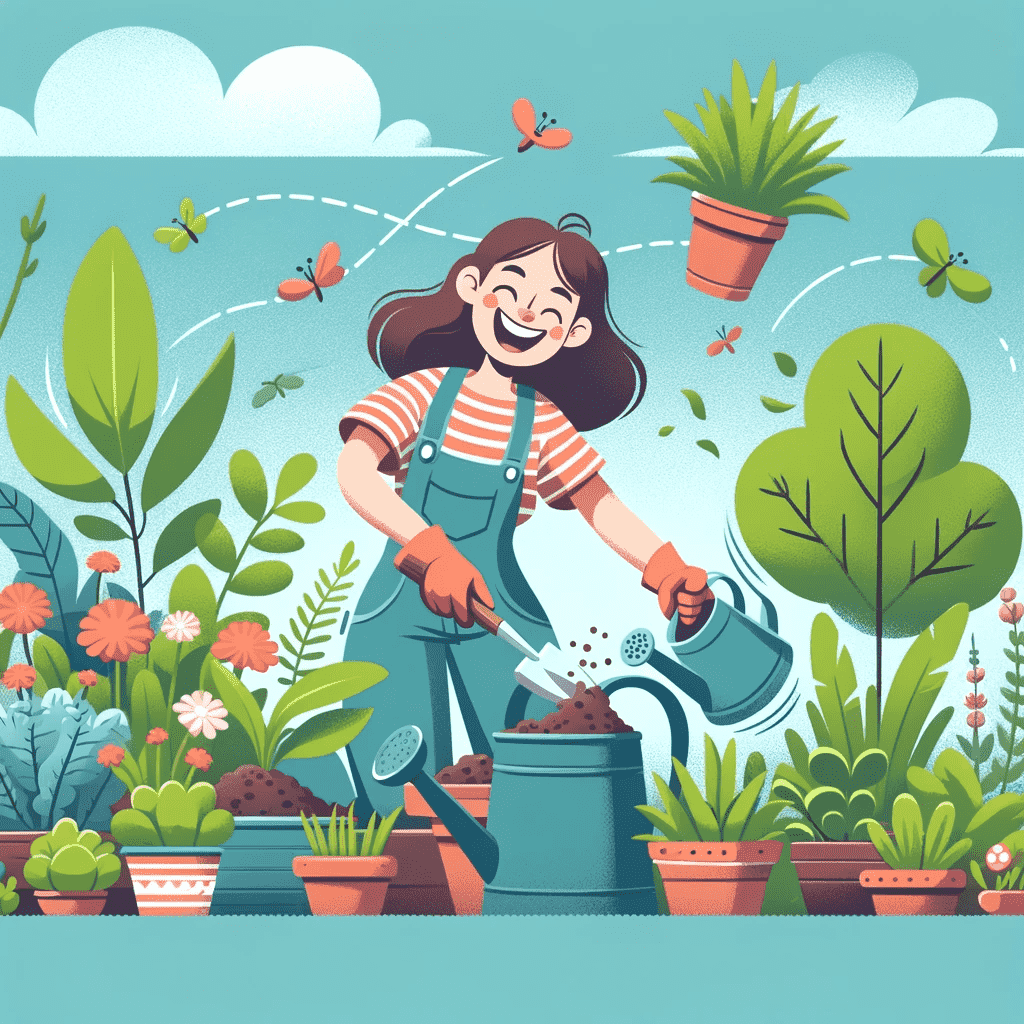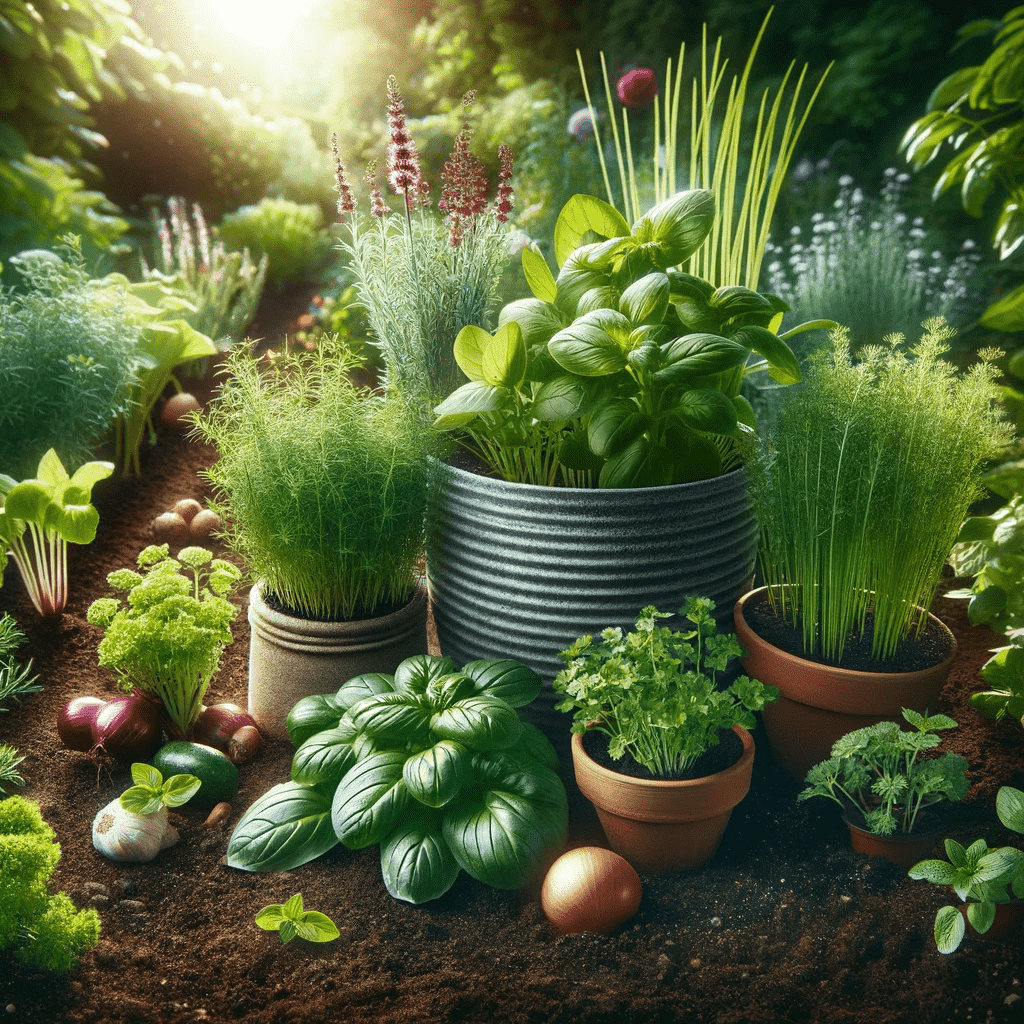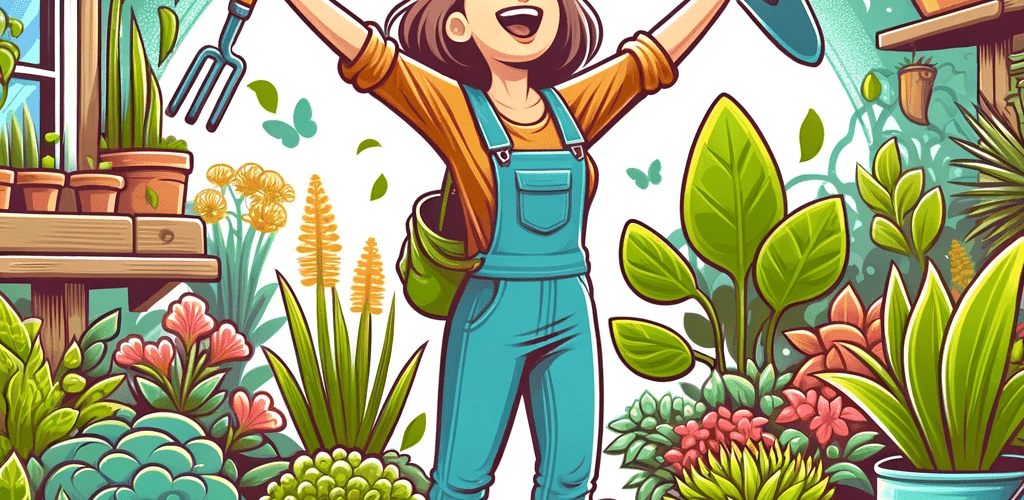Beginner Gardening Essentials: A Comprehensive Guide
Embark on a delightful journey into the world of gardening, a rewarding adventure that brings beauty and satisfaction into your life. “Beginner Gardening Essentials” is a step-by-step guide crafted to help you cultivate a thriving garden from the ground up.
Laying the Foundations of Beginner Gardening Essentials
The Ideal Garden Location: Sunlight and Accessibility

Choosing the right location for your garden is more than just finding a spot; it’s about creating a nurturing environment for your plants to thrive. Look for an area that gets plenty of sunlight throughout the day, as most plants need about 6 to 8 hours of sun to grow healthily. However, consider the type of plants you wish to grow, as some might require partial shade.
When scouting for the perfect garden spot, think about water accessibility. Your garden needs to be close enough to a water source, making it easier to maintain, especially during dry spells. Also, consider the wind factor. A location that is too windy might harm delicate plants or dry out the soil quickly. Setting up a natural windbreak or a fence can be a great solution.
Explore our article on transforming food into supportive meals for more insights into how your garden’s location can influence the quality of your homegrown produce.
Essential Gardening Tools: The Basics
As a beginner gardener, having the right tools is crucial for making your gardening experience enjoyable and successful. Start with a sturdy spade for digging and turning soil, and a hand trowel for smaller digging tasks and planting. Gardening gloves are essential for protecting your hands from thorns, splinters, and soil-borne bacteria.
A watering can or garden hose with an adjustable nozzle is important for watering your plants. The nozzle helps control the flow and spread of water, preventing over-watering. Consider a garden fork for breaking up hard soil and a rake for clearing leaves and debris. Keeping your tools clean and sharp extends their life and makes gardening tasks more efficient.
For more tool recommendations, check out our guide on DIY ideas for your garden.
Understanding Soil and Plant Selection
Soil is the lifeblood of your garden. Begin with nutrient-rich, well-draining soil to give your plants the best start. Consider getting your soil tested to understand its nutrient content and pH level. This knowledge will help you choose the right amendments to improve soil health.
When it comes to plant selection, start with easy-to-grow varieties that are known for being hardy and beginner-friendly. Consider the climate and the amount of sunlight in your garden when choosing plants. Herbs like basil and mint, vegetables like lettuce and tomatoes, and flowers like sunflowers and marigolds are great for beginners.
Get inspired by our tips on growing healthy mint at home.
Watering and Plant Care Basics
Effective watering is crucial for plant health. Most plants prefer deep, infrequent watering, which encourages deeper root growth and resilience. Learn the specific water needs of your plants; some might require more frequent watering than others. A general rule is to water when the top inch of soil feels dry.
Regular monitoring and care are key to a healthy garden. Watch out for signs of pests or diseases and address them promptly using organic solutions. Mulching helps retain soil moisture and suppresses weeds. As your plants grow, they might need support structures like stakes or trellises, especially for climbing plants and heavy producers like tomatoes.
For further reading on basic plant care, delve into our article on bedroom plants that help you sleep better.
Deepening Your Gardening Knowledge

Selecting the Right Location: A Deeper Dive
Beyond finding a sunny spot, understanding your garden’s microclimate is essential. Observe how sunlight moves across your chosen area throughout the day and across seasons. Some areas might receive intense afternoon sun, which can be harsh for certain plants, while others might be shaded by trees or buildings.
Consider the quality of your soil. Is it sandy and well-draining, or more clay-like and moisture-retentive? Understanding these characteristics will help you choose plants that are best suited to your garden’s conditions. Don’t forget to think about how close your garden is to your house. Easy access means you’re more likely to tend to your plants regularly.
Gardening Tools: Beyond the Basics
As you become more comfortable with basic tools, it’s time to expand your toolkit. A soil pH tester can be invaluable for understanding your soil’s acidity or alkalinity, which affects nutrient availability to plants. A compost bin is also a great addition, allowing you to turn kitchen scraps and yard waste into rich, organic matter for your soil.
For tackling weeds, a hoe or a cultivator can be very effective. These tools help keep your garden tidy and your soil aerated without too much effort. A wheelbarrow or garden cart is also handy for moving soil, compost, and larger plants around your garden.
Discover more useful tools in our article on creative garden hacks.
Plant Selection: Growing Your Garden
With the basics down, you can start experimenting with more diverse plant choices. Consider the overall design of your garden. Do you want a vegetable garden, a flower garden, or a mix of both? Planting perennials can give your garden a structure and style, while annuals can add seasonal color and variety.
Try incorporating native plants into your garden. They’re adapted to your local climate and often require less maintenance. Also, think about the heights of different plants and how they’ll look together as they grow. Layering plants of different heights creates a more dynamic and visually appealing garden.
Mastering Watering Techniques
Effective watering is as much about how you water as it is about how often. Watering deeply and less frequently encourages plants to develop deeper root systems, making them more drought-tolerant. Consider installing a rain barrel to collect rainwater for your garden – it’s an eco-friendly option and can be especially helpful in areas with water-use restrictions.
Remember that different plants have different watering needs. Grouping plants with similar water requirements together can make watering more efficient and effective. Pay attention to your plants’ signals. Wilting, for example, can indicate that your plant needs water, but it can also be a sign of over-watering.
Enhancing Your Gardening Skills
Creating Microclimates: Advanced Garden Planning
Your garden can have several microclimates, each offering different growing conditions. By understanding these, you can place plants in the optimal locations for their specific needs. For example, plants that prefer cooler conditions can be placed in areas that receive morning sun and afternoon shade.
Creating microclimates also involves manipulating the environment. For instance, planting a row of shrubs can shield more delicate plants from strong winds. Similarly, a trellis with climbing plants can provide shade for heat-sensitive plants. This thoughtful placement and arrangement can drastically improve your garden’s productivity and aesthetic appeal.
Learn more about garden planning in our article on window box planting.
High-Tech Gardening Tools: Elevating Your Garden’s Health
As you advance in your gardening journey, investing in high-tech tools can significantly enhance your garden’s health. A soil pH tester, for instance, allows you to tailor your soil amendments and fertilizers to the specific needs of your plants. Moisture meters can help you avoid over- or under-watering by giving you an accurate reading of the soil’s moisture levels.
For gardeners interested in automating some of their tasks, a programmable drip irrigation system can be a game-changer. It ensures your plants get the right amount of water at the right time, even when you’re away. Plus, it conserves water by targeting the root zone directly, reducing evaporation and runoff.
The Art of Companion Planting: Creating a Garden Ecosystem
Companion planting is an age-old practice that involves growing different plants together for mutual benefit. It can help deter pests, improve pollination, and even enhance the flavor of your vegetables. For example, planting basil near tomatoes can help repel certain insects and improve the tomatoes’ taste.
This method also promotes biodiversity, which is essential for a healthy garden ecosystem. By attracting beneficial insects like bees and ladybugs, you can naturally control pest populations and improve your garden’s overall health. Companion planting is a sustainable, chemical-free way to boost your garden’s productivity.
Dive deeper into this topic with our guide on seasonal veggies and their companions.
Efficient Watering Systems: Smart Gardening
Investing in an efficient watering system like drip irrigation can save you time and ensure your plants get the water they need to thrive. These systems deliver water directly to the soil at the base of your plants, minimizing evaporation and water waste. They are particularly beneficial for vegetable gardens and flower beds where consistent moisture is key.
Drip irrigation systems can be customized to suit the layout and size of your garden. They are also ideal for gardens in regions with water restrictions, as they use water more efficiently than traditional sprinklers. With a timer, your irrigation system can water your plants at the best time of day, usually in the early morning, to reduce water loss through evaporation.
Mastering Sustainable Gardening Practices
Advanced Gardening Essentials: Windbreaks and Shaded Areas
Effective garden planning involves more than just plant selection; it’s about creating an environment where your plants can flourish. Incorporating windbreaks, such as hedges or fences, can protect your plants from strong winds, which can dry out soil and damage delicate foliage. Similarly, creating shaded areas can help protect plants from intense midday sun, especially in hotter climates.
Consider the use of both natural and man-made structures to create these protective areas. Trees, shrubs, or even taller plants can provide necessary shade for understorey plants. Arbors and pergolas can also be used to create shaded areas, adding a beautiful architectural element to your garden.
Elevating Your Garden’s Health with Advanced Tools
As you become more adept at gardening, advanced tools can help you fine-tune your garden’s environment. Soil pH testers and moisture meters offer precise information about your soil’s condition, allowing you to make informed decisions about watering and fertilizing.
In addition, consider using organic fertilizers and compost to enrich your soil naturally. These products not only feed your plants but also improve soil structure and promote healthy microbial activity. Composting your kitchen scraps and garden waste is an excellent way to reduce waste and create a sustainable cycle in your garden.
Companion Planting: A Thriving Ecosystem
Companion planting is a cornerstone of sustainable gardening. By understanding the relationships between different plants, you can create a harmonious garden ecosystem. This approach not only reduces the need for chemical pesticides and fertilizers but also encourages a diverse range of beneficial insects and wildlife.
For example, planting marigolds among your vegetables can help deter pests, while growing herbs like dill or fennel can attract beneficial insects. Companion planting also allows you to make the most of your space by combining plants with different growth habits and requirements.
Discover more about this sustainable practice in our article on easy tips for growing healthy mint, which can be a great companion plant in your garden.
Efficient Watering: Drip Irrigation Systems
A drip irrigation system is a smart investment for the sustainable gardener. These systems deliver water directly to the base of your plants, reducing evaporation and runoff. This targeted watering approach is not only more efficient but also helps prevent common problems such as leaf diseases and soil erosion.
Setting up a drip irrigation system can be a simple DIY project, and there are many resources available to help you design a system that meets the specific needs of your garden. You can also add a rain sensor or a smart controller to further optimize water usage.
In this comprehensive guide, “Beginner Gardening Essentials,” we’ve covered everything from selecting the right location and tools to advanced techniques like creating microclimates and companion planting. We hope this gardening journey brings you as much joy and fulfilment as it brings to your garden.
As you embark on or continue your gardening journey, consider enhancing your experience with the Stream Greenhouse, Walk-in Green House with PE Cover and Roll-Up Zipper Door. Perfect for beginners, this greenhouse offers ample space (4.7’x2.4’x6.4’) and is ideal for nurturing a wide range of plants, herbs, and flowers. Its user-friendly design makes it a great addition to any garden. Learn more and purchase this amazing product here or click on links down!
Happy Gardening!





